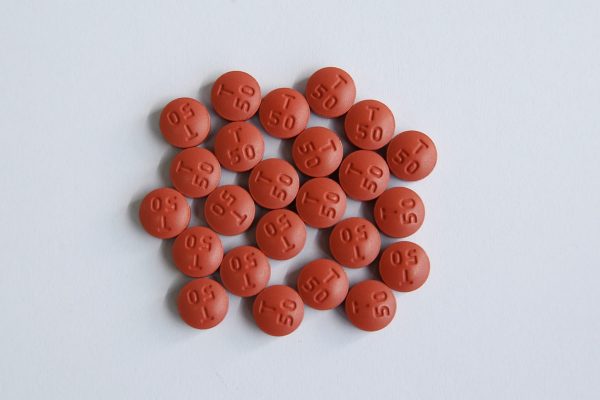South Korea’s first known HIV case was in 1985, but mass fear of the virus emerged years before due to often sensationalised reports from abroad. The government’s initial response was to implement mandatory testing on groups it considered ‘high-risk’, which ranged from sex workers to gay men who it suspected of having sexual relations with foreigners. Anyone who tested positive was placed under strict governmental surveillance — a practice that is still in place.
In 1987, the government enacted the AIDS Prevention Act, which allowed it to test and investigate anyone suspected of having HIV. The government started large-scale testing but this quickly proved ineffective. In 1996 nearly 5 million people were tested with one infection detected per 58.000 tests. The focus on testing ‘high-risk’ groups failed to recognise that the transmission route had shifted. In 2011, the Korea Centers for Disease Control and Prevention estimated that in 1985–2011, 80.9 per cent of HIV infections were transmitted through sex (the remaining 19.1 per cent being attributed to IDU and Mother-to-Child transmissions). Within the 80.9, only 32.0 per cent were transmitted through homosexual contact.
In the 1990s, the government was not only carrying out futile testing but was also failing to adapt to the changing patterns of the epidemic. As the number of reported HIV infections remained relatively low throughout the 1990s, the initial panic calmed down. By the early 2000s, politicians and the media no longer considered HIV an imminent threat. Today, fears have re-surfaced. The Korea Centers for Disease Control and Prevention reported 1199 new HIV cases in 2016 — a 77 per cent increase since 2010. Researchers estimate that the real number of HIV cases could be four to five times higher.
At the same time, South Korea criminalises HIV transmission. While the government on paper provides access to free HIV testing and antiretroviral drugs, it has not allocated funding or enacted legally binding policies to tackle stigmatisation and discrimination against people living with HIV. Hospitals regularly turn away people living with HIV. Gaps in legislation along with inadequate enforcement of governmental policy has culminated in cases such as the incidents in Sudong Yonsei Sanitarium Hospital (the designated AIDS hospice at the time), which in 2013 lost its license and funding due to abuse of AIDS patients.
The absence of legislation to protect people living with HIV from discrimination enables attacks that incorrectly associate HIV with stigmatised demographic groups. Some sects of the South Korean Protestant right (such as the Christian Council of Korea, which reportedly represents more than 45,000 churches and has 12 million followers) have formed a powerful conservative grouping that publicly links HIV with homosexuality and anti-patriotism. Specifically, they argue that dongseongaeja (individuals attracted to those of the same sex) should be punished for endangering the nation by spreading HIV.
Wider society has absorbed a lot of misinformation about HIV, which cannot be transmitted through touching. In one article, concerned parents ask if they can eat at the same table, live in the same house and wash laundry in the same machine as their HIV-positive son. According to surveys, 88.1 per cent of South Koreans do not want HIV-positive people as neighbours, 59.6 per cent said that they would refuse to eat at the same table as a HIV-positive person and 51.2 per cent would not allow their children to attend the same school as one. 49.9 per cent would not care for a family member diagnosed with HIV. Social stigma also discourages South Koreans from seeking HIV testing and treatment, which perpetuates high rates of transmission. The stigma is also linked to disproportionately high suicide rates among HIV-positive South Koreans.
Due to government policy, South Korea may be sitting on a ticking public health time bomb. Sex workers, foreigners and dongseongaeja are branded as ‘high-risk’ groups for HIV. But it is the lack of anti-discrimination laws, outlawing of sex work and discriminatory immigration policies that contribute to the spread of the virus. Statements that blame or pinpoint specific demographic groups promote the illusion that everyone else is somehow ‘safe’.
Conservative education policies mean young South Koreans seek information on sex outside of the formal education system. In effect, pornography sites and media start-ups have become the most popular platforms to learn about sex and sexuality. Condoms are used inconsistently and ‘pulling out’ is widely considered a sufficient contraception method. Insufficient sex education creates a perfect breeding ground for sexually transmitted diseases.
Ignoring a problem does not solve it. Neither does mislabelling it. In South Korean public debates, HIV is strongly linked with homosexuality and anti-patriotism. These linkages conceal how a lack of proper sex education and social stigmatisation all contribute to the spread of HIV instead of to its management.
If the government is to tackle the spread of HIV, the challenge is to counter misinformation and overcome the stigma that surrounds it. The Moon administration needs to reform South Korea’s HIV prevention policies and establish new practices — and it needs to do so urgently. First steps could be prohibiting refusals of treatment based on an individual’s HIV status and amending the AIDS Prevention Law to decriminalise HIV transmission. Both acts have the potential to encourage people to get tested and seek treatment.
Sini-Petriina Kuusisto is an ESRC PhD candidate at the University of Sheffield. She researches sexuality and HIV-related stigma in contemporary South Korea. Follow her on Twitter at @SiniPetriina


“But it is the lack of anti-discrimination laws, outlawing of sex work and discriminatory immigration policies that contribute to the spread of the virus. Statements that blame or pinpoint specific demographic groups promote the illusion that everyone else is somehow ‘safe’.”
You lost me there. How does what you just said make sense at all when there is little correlation between the two ideas that you’ve presented.